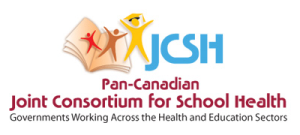Discover all the areas that make up the foundational concepts of JCSH work
Terms Glossary.
Explore definitions for common terminology and concepts used in the school health sphere. Understanding the language used by school health professionals and policy makers will ensure that you get the most out of the resources and information presented on this web site.
JCSH Strategic Directions 2020-2025
In 2005, Canada’s provincial and territorial ministers responsible for health and education pioneered a new approach to improving the health and learning for school-aged children and youth: the Pan-Canadian Joint Consortium for School Health (JCSH). They recognized that, statistically, young people were at risk for a range of physical, psychological, and behavioural problems – and that these kinds of issues have major implications not only for learning, but also for long-term health and health care costs.
Today, the JCSH comprises the ministries of education and ministries responsible for health/wellness in 12 of the 13 provinces and territories1. The federal government also supports the work of the Consortium, with the Public Health Agency of Canada (PHAC) serving in a funding and advisory capacity.
The Proposed Strategic Directions document for 2020-2025 focuses on the emerging key priority areas that the Consortium will address during its 5-year mandate.
Health Promoting Schools
Health Promoting Schools – also known as comprehensive school health – is an internationally recognized approach to supporting improvements in students’ educational outcomes while addressing school health in a planned, integrated and holistic way.
This whole-school model builds capacity to incorporate well-being as an essential aspect of student achievement. Actions address four distinct but inter-related components that comprise a health promoting schools approach:
- social and physical environment
- teaching and learning
- policy
- partnerships and services.
When actions in all four components are harmonized, students are supported to realize their full potential as learners – and as healthy, productive members of society.

